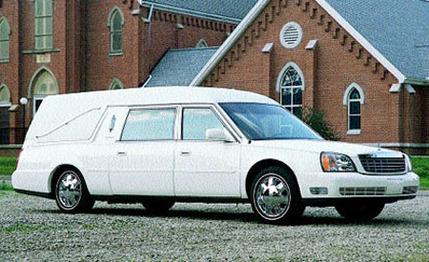 Specialty File
Specialty File
In 2003, Cadillac will celebrate its 100th birthday. Big deal. The Ohio-based company that built the hearse you see here-known euphemistically in the trade as a "coach"-is more than a quarter-century older.
No kidding. Sayers & Scovill began assembling hearses in 1876-back then employing genuine horse power-and has been at it ever since, interrupted only by piddling distractions such as two world wars. Today, S&S's "professional cars" are built in a 168,000-square-foot plant in Lima, Ohio, as are three other of the most coveted brands in hearsedom: Eureka, Miller-Meteor, and Superior. All are owned by parent company Accubuilt. If Accubuilt owned Superior alone, it would still qualify as the planet's largest assembler of hearses.
Hearses purchased at any of Accubuilt's 47 dealers run from $63,475 to $75,475, the latter reflecting the sticker affixed to S&S's top-of-the-line Masterpiece, as tested here. This particular state of the art in stateliness was custom-ordered by Larry DeWitt of the Lyon-DeWitt Funeral Home in Campbellsville, Kentucky. When the car originally rolled onto one of two 700-foot-long assembly lines at Accubuilt, it was what Cadillac calls a "B9Q"-a chassis intended to be stretched. That means it comes with body reinforcements, special wiring, eight-lug 17-inch wheels, and stiffer springs and dampers.
The moment each new DeVille arrives, it is set upon by masked men wielding cutting torches and saber saws. Almost every item aft of the front clip, including the windshield and A-pillars, is rudely dismantled or discarded. The skeletal remains are then clamped into Winnebago-size framing jigs, where the wheelbase is extended 32 inches and the rear overhang a further six. As this colossus then inches down the line, Accubuilt's 300 employees add larger side windows and a taller windshield-"commercial glass," as it's known in the trade-not to mention the company's unique steel doors (stamped in a three-story, 850-ton press), nine applications of BASF paint (usually black, but white, navy, and silver are also popular), and a trolley's worth of custom vinyl, leather, walnut, and chrome. In all, 420 unique parts find a home here, with nearly all-perhaps with the exception of the plasticky carriage lamps-resembling Cadillac originals.
Climb behind the wheel and what you notice first is the Cinerama-size glass-two inches taller than stock and more upright, rising like an Econoline's windshield. The interior is otherwise familiar DeVille, if a DeVille offered headroom to accommodate Honest Abe's stovepipe hat. Behind the driver's head is a sliding glass partition that creates a cozy, almost intimate two-seat cockpit smaller than Cadillac ever intended. The result is that the stock air conditioning can replicate the Arctic in about 90 seconds.
Cadillac's otherwise desirable 275-horse Northstar V-8 roars and struggles here, but it is pretty much overwhelmed by the extra 1471 pounds of funeral kit. The bonus 25 horses produced by a DTS's V-8 would have helped. Acceleration is predictably leisurely: 60 mph in 10.6 seconds, 4.2 seconds behind a DTS. Top speed is 94 mph, a velocity rarely achieved during interments because it agitates the bereaved.